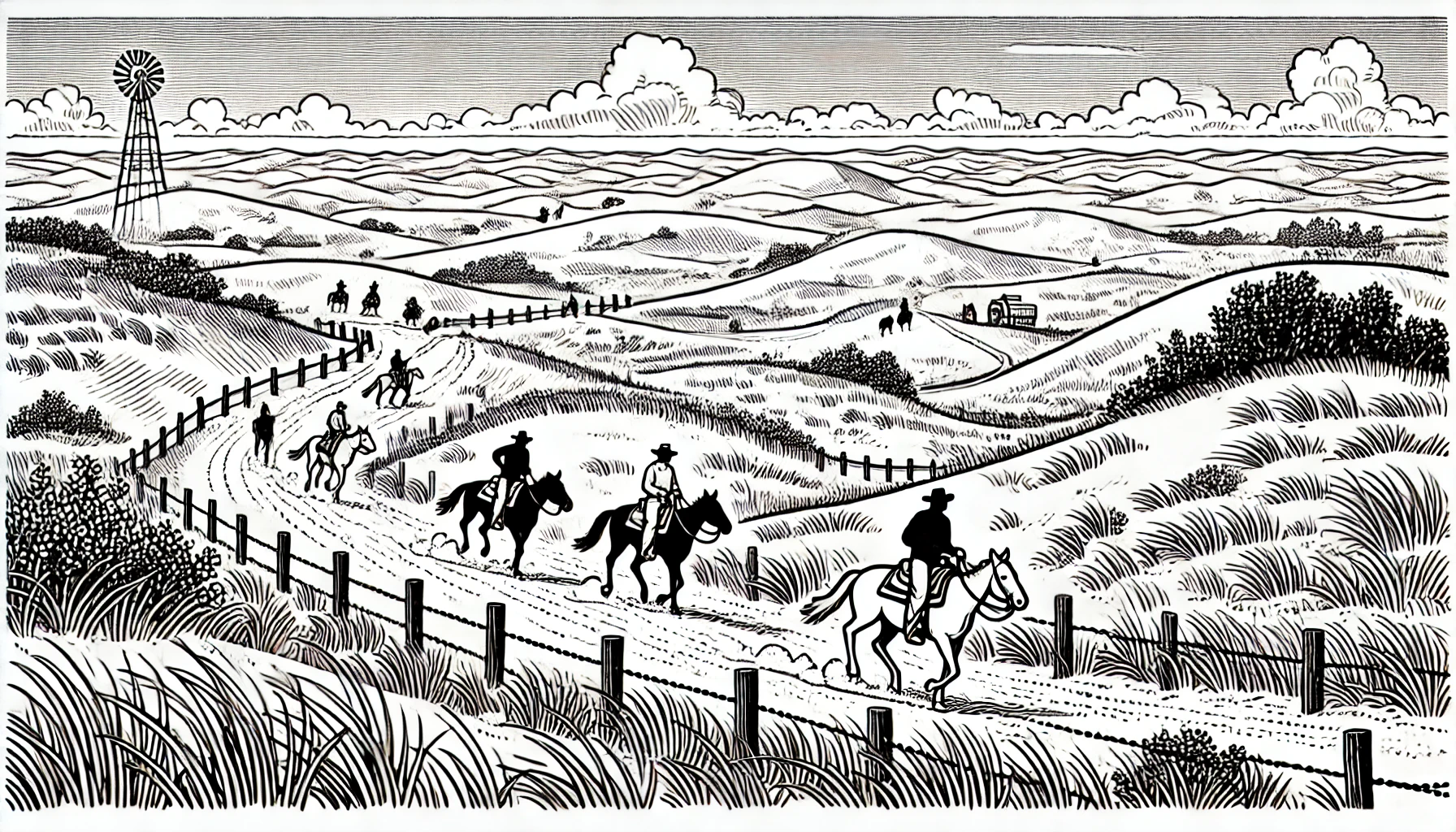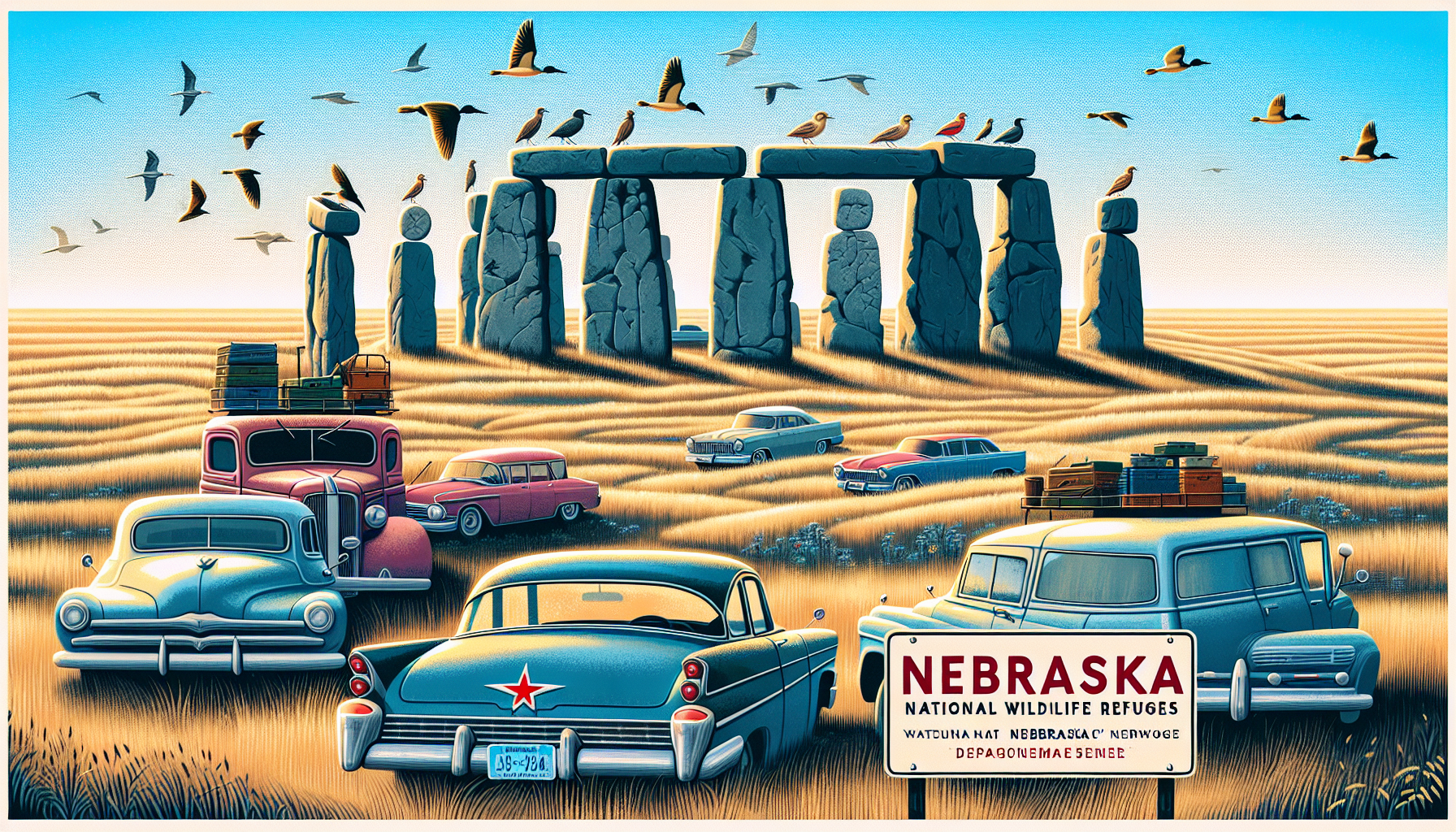Fort Kearny Hiking Trails in Nebraska

Located near Kearney, Nebraska, within the Fort Kearny State Recreation Area, the Fort Kearny Hiking Trails offer outdoor enthusiasts an opportunity to immerse themselves in the natural and cultural heritage of the region. Spanning over 700 acres, the area comprises a complex network of trails that cater to diverse interests and hiking levels.
The 5-mile Kearney Audubon Trail is one of the most popular trails within the area. As a National Audubon Society Certified Trail, it is recognized for its biodiversity and the comprehensive conservation efforts employed to protect and restore native plant species. With the assistance of knowledgeable park rangers, hikers can identify and learn about the local flora and fauna, as they traverse this trail.
While trekking along the trails, visitors can observe remnants of the original Fort Kearny State Park landscape, along with remnants of the historic Overland Trail, an important thoroughfare for early American pioneers. Hikers may also stumble upon one of the historic farmsteads present in the area, offering a glimpse into the state's settler history.
One notable aspect of the Fort Kearny Hiking Trails is their interconnection with the Platte River Trail. This unique network of pathways traverses multiple conservation areas and parks along the Platte River, forging an essential link between wildlife habitats, allowing species to migrate safely and facilitating a mosaic of plant species. As a result, the Fort Kearny Hiking Trails are not isolated recreational destinations but also play a crucial role in preserving local ecosystems.
Throughout the year, park visitors may also stumble upon rare bird species such as Sandhill Cranes or Cerulean Warblers, which stop by Fort Kearny during their migratory journeys. Given the array of unique physical and sensory experiences available within the park, hikers should be prepared to navigate areas of varying terrain, vegetation types, and weather conditions.
Since Fort Kearny State Recreation Area closely adheres to the park-managed wildlife management philosophy of maintaining native ecosystems, hikers must adhere to regulations and guidance offered by park rangers to interact harmoniously with the environment.
Over 15 recognized trailheads give hikers strategic access to the diverse network of trails available at Fort Kearny. Located at the scenic intersection of the Platte and Little Blue Rivers, the trails serve not only as important networks for local ecosystems but also evoke a sense of tranquility for the visitors.
Given the dynamic interplay between park wildlife, hikers, and rural environments, Fort Kearny's ecologically guided framework has resulted in significant gains in reducing environmental degradation and preserving important ecological pathways.
The 5-mile Kearney Audubon Trail is one of the most popular trails within the area. As a National Audubon Society Certified Trail, it is recognized for its biodiversity and the comprehensive conservation efforts employed to protect and restore native plant species. With the assistance of knowledgeable park rangers, hikers can identify and learn about the local flora and fauna, as they traverse this trail.
While trekking along the trails, visitors can observe remnants of the original Fort Kearny State Park landscape, along with remnants of the historic Overland Trail, an important thoroughfare for early American pioneers. Hikers may also stumble upon one of the historic farmsteads present in the area, offering a glimpse into the state's settler history.
One notable aspect of the Fort Kearny Hiking Trails is their interconnection with the Platte River Trail. This unique network of pathways traverses multiple conservation areas and parks along the Platte River, forging an essential link between wildlife habitats, allowing species to migrate safely and facilitating a mosaic of plant species. As a result, the Fort Kearny Hiking Trails are not isolated recreational destinations but also play a crucial role in preserving local ecosystems.
Throughout the year, park visitors may also stumble upon rare bird species such as Sandhill Cranes or Cerulean Warblers, which stop by Fort Kearny during their migratory journeys. Given the array of unique physical and sensory experiences available within the park, hikers should be prepared to navigate areas of varying terrain, vegetation types, and weather conditions.
Since Fort Kearny State Recreation Area closely adheres to the park-managed wildlife management philosophy of maintaining native ecosystems, hikers must adhere to regulations and guidance offered by park rangers to interact harmoniously with the environment.
Over 15 recognized trailheads give hikers strategic access to the diverse network of trails available at Fort Kearny. Located at the scenic intersection of the Platte and Little Blue Rivers, the trails serve not only as important networks for local ecosystems but also evoke a sense of tranquility for the visitors.
Given the dynamic interplay between park wildlife, hikers, and rural environments, Fort Kearny's ecologically guided framework has resulted in significant gains in reducing environmental degradation and preserving important ecological pathways.
